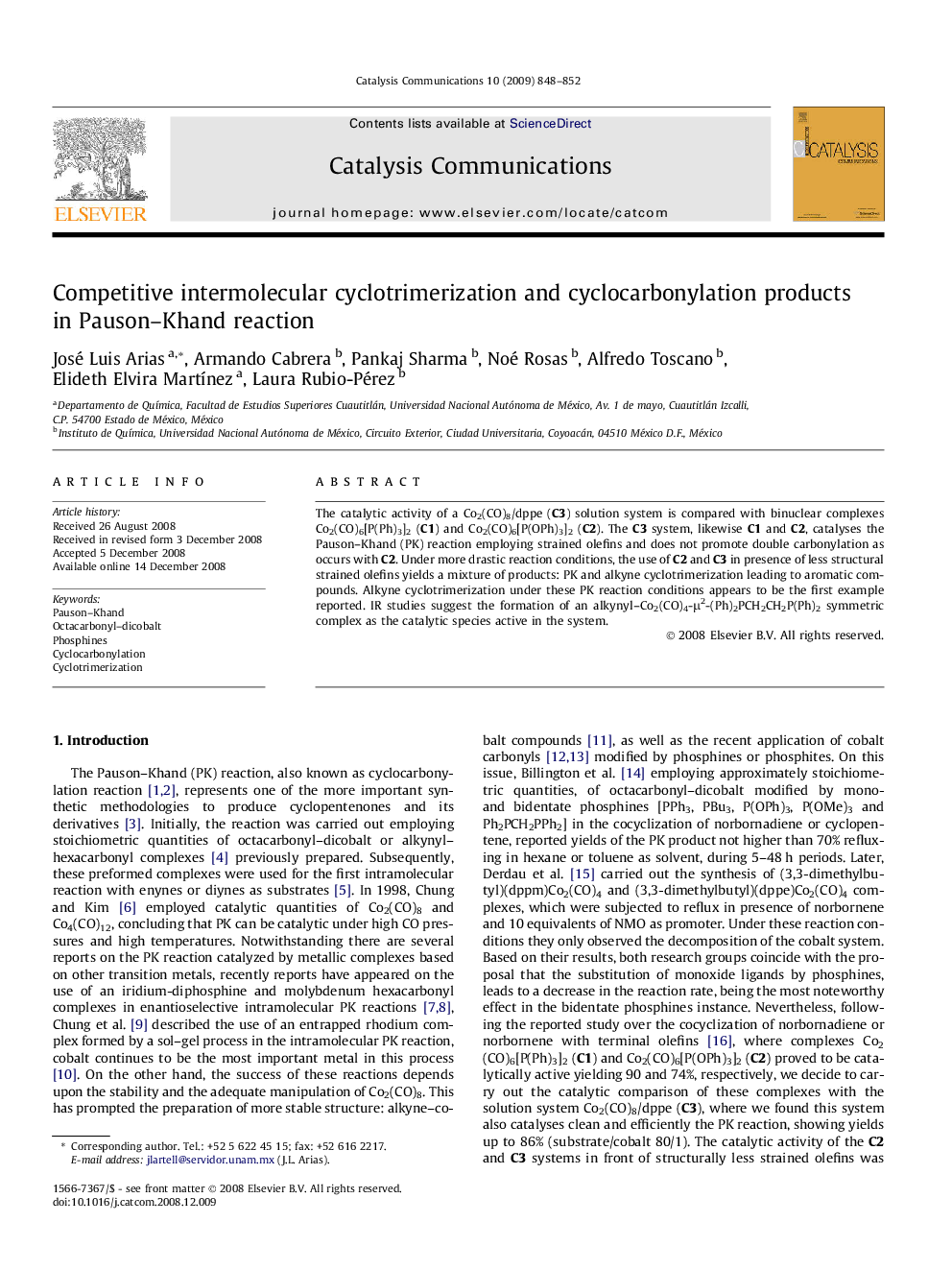| Article ID | Journal | Published Year | Pages | File Type |
|---|---|---|---|---|
| 51445 | Catalysis Communications | 2009 | 5 Pages |
The catalytic activity of a Co2(CO)8/dppe (C3) solution system is compared with binuclear complexes Co2(CO)6[P(Ph)3]2 (C1) and Co2(CO)6[P(OPh)3]2 (C2). The C3 system, likewise C1 and C2, catalyses the Pauson–Khand (PK) reaction employing strained olefins and does not promote double carbonylation as occurs with C2. Under more drastic reaction conditions, the use of C2 and C3 in presence of less structural strained olefins yields a mixture of products: PK and alkyne cyclotrimerization leading to aromatic compounds. Alkyne cyclotrimerization under these PK reaction conditions appears to be the first example reported. IR studies suggest the formation of an alkynyl–Co2(CO)4-μ2-(Ph)2PCH2CH2P(Ph)2 symmetric complex as the catalytic species active in the system.
